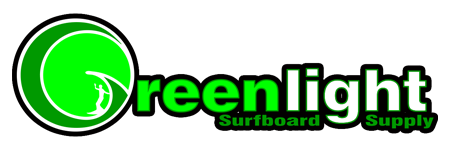Fins and fin placement are the most underappreciated aspect of surfboard design.
Before you start mowing foam, in the design process, it is best to ask yourself "How do I want this board to surf, and in what waves do I want to ride this board?" Loose and skatey for small mushburgers? Super fast and drivey for surviving monster barrels (or more likely closeout sections)? Boosting airs?
Fin position, toe-in, and cant, as well as fin template, foil, rake, and material all combine to produce a specific hydrodynamic output.
Fin cant and toe is actually quite simple
Toe-in affects the way the board surfs through balancing turning ability and drag. More tow-in = more turning, more drag (slower board), less toe-in = less turning, less drag (faster board).
Toe-in is the angle the fin is pointing towards the nose. It is usually measured in fractions of an inch relative to a line parallel to the stringer over a distance of 4 1/2" inches (for trigonometry's sake). Common toe-in values are 1/4", 3/16", and 1/8"
Tri fin set ups normally have 1/4" toe in the front fins but can be less for big wave boards where speed is more important than turning. Quads normally have 1/4" in the front for pivot and 3/16" or 1/8" in the rear fins for drive.
Twins are 3/16" or 1/8" since there is no center fin to stabilize and the set up is already more prone to turning than drive.
Fin Cant is the same principles as tow-in. Turning vs. drag but in a different plane. Cant allows the fin to "stick into the wave" at an angle and acts as a pivot to turn the board. More cant = more turning, more drag. Less cant = less turning, more drive in the board.
Tri fin set ups are normally 7-9* in the front for turning but 5* is used for bigger waves or more down the line surfing.
Quads are 7-9* in the front and 3-5* in the rear. The front fins act as pivots for turning and the rear fins are the driving mechanism.
Twins are set at the lower range of cant angle and classic double foiled keel fins are normally set at 0* cant for all speed and little turning.
About Fins Themselves
The overall Size of the fin will make a big difference in the performance. A larger fin will have more hold and provide more control in bigger surf, where a smaller fin will be loose and somewhat more forgiving, but lack the drive and control needed in bigger surf.
The Base is the part of the fin that is attached to the board. A wide, or long fin base will help to produce more drive and will allow you to draw out your turns. A narrow, or short fin base will be a little easier to turn, but will produce less drive.
The Depth of a fin is how tall, or how deep into the water the fin goes from the bottom of the board. A deep fin will have more hold and stability, whereas a shallow fin will provide more release when throwing your tail around in turns.
The Rake of the fin is how far back the fin tilts or sweeps. The more rake you have in your fin, the more drawn out your turns will be, and are preferable on bigger days or when there is a long wall to work with. An upright fin will pivot a little more and will be more useful on weaker or junky days.
The Foil of a fin is the aerodynamic shape of the fin from front to back (much like an airplane wing), and help to create some lift under the board. Fins are usually thicker around the center and taper out towards the edges. There are a few basic foils and many variations of these. Side fins (found on twins, thrusters and quads) are usually flat, or sometimes curved inward on the inside, with it’s foil on the outside. Center fins usually have equal foil or double foil, on both sides. Usually found on single fins, the center fin on a thruster, or sometimes the rear fins on quads and some keel fins on traditional fishes.
